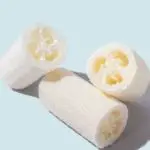Foundation is one of the most popular and important makeup products in a makeup bag.
Everyone knows the struggles of finding the right foundation for their skin – from choosing the right color match to the ideal finish.
As there are so many foundations available on the market, you might be wondering: how is foundation made?
There’s so many types of foundation out there, from matte to sheer to full-coverage to those better suited for oily skin – surely they must all be made in a certain way to achieve the right results?
Here is everything you need to know about how foundation is made!
Types Of Foundation
Before we go into how foundation is made, here are the main types of foundations:
- Water-based foundation
Water-based foundations are the easiest to apply and the most lightweight.
This formula is achieved by mixing water and oil, or water with fatty alcohols or emollients.
- Silicone-based foundation
Silicone-based foundations are thicker than water-based foundations, which means they generally provide a more full-coverage finish.
These foundations are a mixture of water and a silicone product, such as phenyl trimethicone, dimethicone, or polysiloxane.
- Powder-based foundation
Powder-based foundations are one of the thickest foundation types that are designed to adhere to the skin.
The powder used in these formulas is generally talc alongside binding agents, pigment, and emollients.
- Cream foundation
Cream foundation is certainly the thickest foundation type that people wear if they want full coverage makeup.
However, as it is so thick, it’s also heavy. The creamy consistency is usually achieved by including animal fat in the ingredients.
- Serum foundation
Serum foundation has only recently become popular for its moisturizing benefits.
When applied, serum foundation goes onto the skin like a regular skincare serum, which makes the product a makeup and skincare hybrid.
How Is Foundation Made?
The answer to this question lies in chemistry and complex ingredients. It’s not easy to find or make an all-natural foundation that is made from organic ingredients. Here are the common ingredients found in foundation formulas that provide the makeup with a pigment and coverage.
- Glycerin
- Titanium dioxide
- Lecithin
- Talc (magnesium silicate)
- BHT
- Parabens
- PEGs
- Urea
- Sulfosuccinate
- Stearic acid
- Bentonite
- Ethoxylated sorbitan ester
In the simplest of terms, foundation is made by mixing together a variety of chemicals to achieve a certain foundation type – whether it’s powder, liquid, serum, cream, or silicone.
The most important components in foundation are talc and titanium dioxide, which are both naturally occurring ingredients.
Titanium dioxide is found in magmatic rocks as a mineral, and talc is found from metamorphic belts across the world.
Every other chemical involved in the process is included to achieve a certain finish, texture, and appearance to the foundation.
When it comes to making the pigment and shades of a foundation, it mostly comes down to artificial colorings or natural products such as turmeric, cocoa powder, or nutmeg. It’s less common for a foundation to use natural products, but these colorings are the most eco-friendly, so it’s always good to look for them on the ingredient list.
Thing is – it’s hard to say exactly how foundation is made because every foundation product is different from another.
Each brand will have their own formulas – for example, some are vegan and cruelty-free while others aren’t – and every foundation product is made for a different reason.
It’s not just about how the foundation looks on the skin, because some foundations have a built-in moisturizer or SPF.
Brands will then undergo a series of tests to find the perfect foundation.
Every brand and company has their own established and certified top-secret formulas, which is why it’s so hard to find out how exactly they made their products.
The ingredients legally have to be on the packaging and the website for transparency, but the method of making the foundation is somewhat elusive.
All we know is that a bunch of chemicals and ingredients are mixed together!
How To Make Foundation Makeup At Home?

It’s surprisingly common for people to make their own foundation makeup at home.
This is partly to save money, but also people still find it hard to find their perfect foundation shade and texture. Here is how to make liquid foundation at home with the products you already have!
- Start with a dollop of moisturizer or facial oil in a dish. It doesn’t matter how much you start with, because you can adjust the consistency later.
- Then, add one teaspoon of powdered foundation or a powder that you already have. It’s best to use a powder that matches your skin tone, but this can be adjusted later.
- Add one or two drops of essential oil to add some fragrance (optional).
- Stir it all together and test it on your skin. Adjust as necessary.
- If the color doesn’t match your skin tone, try adding some cocoa powder, cinnamon, or nutmeg to make the foundation darker. Alternatively, add turmeric or blush to match your skin’s undertone.
Of course, making your foundation at home isn’t the same as making it in a lab, but the same rules generally apply.
It’s all a matter of trial and error until the ride consistency and shade is achieved. In a lab, however, manufacturers have the additional task of making a foundation product for as many skin tones as the brand wants.
History Of Foundation
People have been making variations of foundation for centuries. Back in Ancient Greece and Ancient Rome, foundation was made with white lead (a poisonous chalk) to make their skin look fairer.
This continued through to Queen Elizabeth I’s reign. Of course, the poisonous substance led to a myriad of health problems and death, so other forms of complexion makeup arose in the 19th-century.
In the 1930s, Max Factor (Hollywood makeup entrepreneur) changed the game when technicolor film showed the greasiness of this new makeup.
He designed a thicker product called Pan-Cake, which started as the basis for all future foundation products.
The formulas then expanded to liquid and water-based foundations, and the rest is history!






